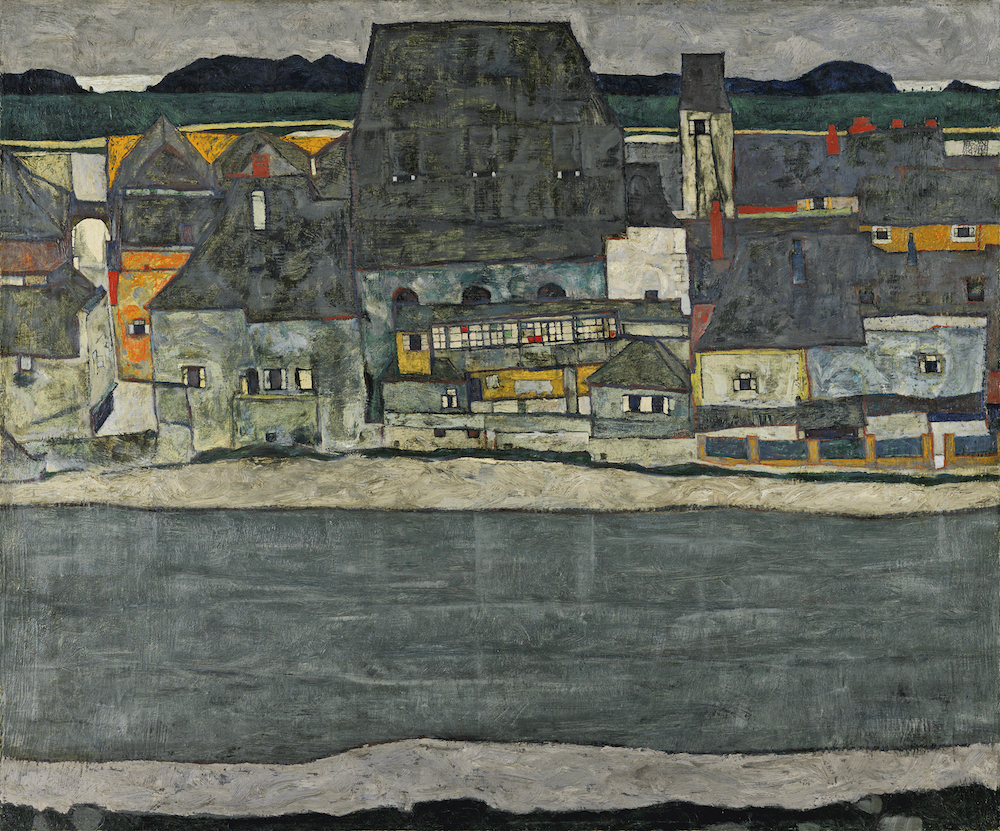Interlude - Egon Schiele at the Museo Nacional Thyssen-Bornemisza
Maybe it’s bad taste, maybe it’s cliché to use this artist for a pandemic-inspired post. Egon Schiele is one of the most famous victims of the 1919 Spanish Flu outbreak, dying aged 28, three days after his pregnant wife. While he’s best-known for his tormented, electrically-hued, sinewy nudes, Schiele left a considerable legacy in landscape painting, too.
How many new town scenes would he have painted, had the flu not cut him down? One of the best of those left to us is in the Thyssen. In Houses on the River, painted in 1914, five years before his death, Schiele looks across calm, glassy waters at a dense grid of streets, roofs and houses. In common with his painted bodies, which so often are cut off at forearm and knee, the town stretches past the edges of the canvas, leaving us a truncated snapshot.

Also in common with his figurative work, there are splashes of unexpected colour. Despite the flat overcast skies, some of the walls of the facades glow with an orangey yellow. Some top-floor windows, and a couple of chimneys, are danger-red. It’s a further remove from reality in a scene that’s already, deliberately unreal. There must be a little Cubist influence in the geometry of Schiele’s streets.
The Old Town in the picture is Krumau, a Bohemian town now in the Czech Republic, where Schiele’s mother was born. He moved there in 1910, in an attempt to find some respite from the hustle and bustle of Vienna. But, having brought his dissolute big city ways to a conservative small town, including his proclivity for painting young local girls in the nude, the artist was thrown out from his rented flat a year later. He was too bohemian for Bohemia, evidently.
Knowing this brings a bit of wistfulness to this scene, where the attractive buildings are totally depopulated, no judgemental locals in sight. Apparently, the collection of buildings in the painting don’t really resemble the town’s actual streetscape; understandable, as it was painted from memory. And, given it was painted in 1914, it’s tempting to see a bit of the gathering darkness of war in the gloominess gathering around those steep-pitched roofs. (Though of course the pandemic that followed could never have been predicted…)
Houses on the River (The Old Town) is in the permanent collection at the Museo Nacional Thyssen-Bornemisza